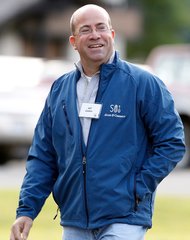The ruling, released late Thursday, asserted that Comcast must include Bloomberg TV in so-called news neighborhoods, a term for locations on a channel lineup with four or more news channels.
It requires Comcast to bring Bloomberg into standard-definition versions of those neighborhoods within 60 days, at least in the biggest cities served by the company.
The F.C.C. decision is a long-sought triumph for Bloomberg, a somewhat obscure business news channel that is owned by Bloomberg L.P., and a setback for Comcast, which owns (through its NBCUniversal division) one of Bloomberg’s more popular competitors, the business news channel CNBC.
It is also a reminder of how much power cable companies have. In Washington, for example, Comcast carries CNBC in standard-definition on channel 39, relatively low on the dial, and Bloomberg on channel 103, where viewers are less likely to stumble upon it. This sort of placement, Bloomberg says, is inhibiting its growth — a common complaint among channel owners.
When Comcast took control of NBCUniversal in early 2011, the government imposed a condition — put forward by Bloomberg lobbyists — that strove to prohibit Comcast from favoring its own news channels over others. Ever since, Bloomberg has been prodding the F.C.C. to force its insertion into news neighborhoods.
Comcast has been pushing back, asserting, among other things, that such a move by the F.C.C. would infringe on its First Amendment rights.
The media bureau of the F.C.C. supported Bloomberg last year, but Comcast appealed to the full commission, prompting Thursday’s affirmation of the original ruling.
Greg Babyak, the head of government affairs for Bloomberg L.P., said the ruling promoted “the availability to the public of diverse sources of news.”
Comcast said it was evaluating its options. Sena Fitzmaurice, the company’s vice president for government communications, said the 2011 condition was being misinterpreted, and “very likely will lead to significant and unwarranted burdens on us, our customers and other programming networks.”
Analysts have said that the F.C.C.’s support of Bloomberg could embolden other news channel owners, like the new Al Jazeera America cable channel, to similarly challenge cable companies.
But it remains unclear how much Bloomberg will actually benefit: one F.C.C. commissioner, Ajit Pai, who dissented in part from the ruling, said “the cure may be worse than the disease” for Bloomberg, because “Comcast may create news neighborhoods consisting entirely of independent news channels,” like C-Span’s trio of channels, and still comply with the condition.

Article source: http://www.nytimes.com/2013/09/28/business/media/comcast-ordered-to-place-bloomberg-with-tv-peers.html?partner=rss&emc=rss


